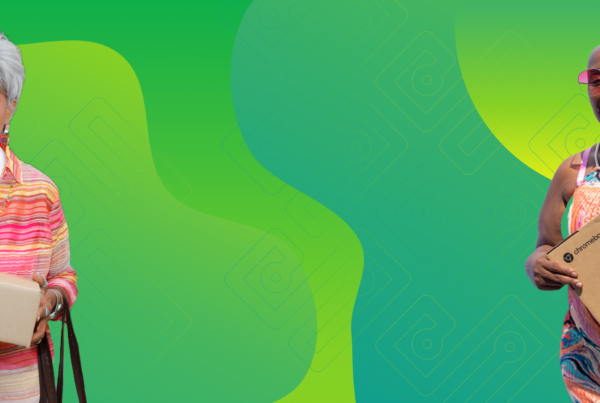By. Michael Condra and Natalia Marrero
How people connect, work and learn today comes down to the availability of devices, internet access, and educational opportunities. Digital equity involves a combination of all three of these for people to gain access to technology and a better quality of life. At human-I-T, we work on connecting these aspects together for new technology users in urban and rural communities. While progress has been made to connect more people, there are still very different levels of digital inequity that people face today.
A key focus on the state of digital equity today has been connecting low-income families to broadband internet access. “We have over 30% of Californian’s who don’t have access to good internet connection, nor do they have access to good technology and that hurts everyone,” says Gabe Middleton, Co-Founder and CEO of human-I-T. This divide is more noticeable between urban and rural communities, who often lack sufficient internet service providers in their areas. In urban communities, “12% of adults do not use the internet,” while “22% of adults in rural areas don’t,” according to a Pew Research Center survey. This number is a stark reminder that different communities face internet access issues that need different solutions.
Digital inequity doesn’t just fall on the lack internet access, it also depends upon the availability and affordability of devices for everyone. “Our vision is to make sure that everybody that can possibly have access to those things, will have access to those things,” says Aaron Wilkins, CFO of human-I-T. Finding available and affordable devices is a huge issue that communities face today when there is a lack of available options. At human-I-T, Wilkins mentions that this issue is tackled by “helping build a program that’s going to be robust for internet access and making sure that we have the best offers for people, so that way if cost is a barrier to entry, they’re able to afford a device and service.”
Another aspect of digital equity is having well-informed citizens that can gain access to information. What digital equity aims to build is greater awareness about local issues, services, and employment opportunities for connected communities. “If someone doesn’t have access to technology, access to digital equity they aren’t able to communicate to their family, to the world, or to their government,” says James Jack, Co-Founder of human-I-T. It’s a pressing issue that impacts education, social services, and employment that limits productivity for communities across the nation. As Jack points out, “access to information and the ability to communicate,” are the two main points that communities face today with digital equity challenges.
Digital equity is a major bridge for people not just in our community, but in every community across the country. Having affordable and available devices in addition to inclusive internet access is vital for connecting more people to the services they need. What’s important now is improving people’s ability to stay connected and be well informed about decisions in their community.
Related articles from our blog:
The Social Cost of Digital Exclusion
Bridging The Digital Divide With Alchemy Communications
More information:






